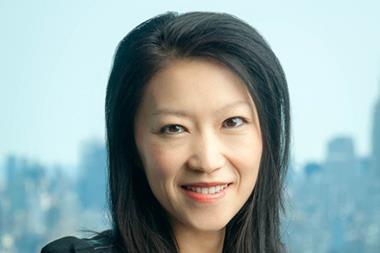GLOBAL - Credit Agricole Asset Management (CAAM) has unveiled two global equity funds which incorporate a mixture of top-down, tactical and bottom-up strategies designed to generate uncorrelated performance.
Described as "a new approach to reconcile top-down and bottom-up" strategies without applying a fund of funds system, the Global Emerging Multi-Strategy (GEMS) fund and hedge fund focus on liquidity and transparency of assets but seek to achieve 4% alpha to the MSCI World index.
The fund is managed by a team of people in both Paris and London - having an ‘architect' decision-maker in each location - but actually splits its risk budget into three elements - top down architecture, volatility and trading, and bottom-up stock-picking, to generate returns on an average tracking error of 6-8% through uncorrelated performance.
Vincent Chailley, head of global management at CAAM's London branch, helped to launch the fund and manage its collateral, working alongside fEmmanuel Bourdeix, head of equity satellite teams at CAAM Paris.
Under the combined strategy - which Chailley acknowledges has already been adopted at other asset management houses albeit more through fund of funds investments - it is expected 40% of the risk budget will focus on top down macroeconomic and long-term directional decisions, hedged in part by futures contracts.
A further 35% is allocated to bottom-up stock-picking decisions by individual satellite teams while the remaining 25% of the funds' risk budgets are allocated to making short-term moves in the market to diversify correlated market activity.
The fund is predominantly driven by equity trading but also gives portfolio managers the opportunity to invest in derivatives and includes currency as one of 10 potential long-term investment routes, to offset the return risk of emerging markets assets.
CAAM is targeting the fund at investors who want to delegate their global equity management to a single party, as is the case with Middle Eastern and Asian investors, as well as pension funds in the UK, according to Chailley.
The fund itself was launched at the end of April to assess its potential performance and correlations, so has seen the worst of recent volatility when markets were particularly turbulent. In that time, the funds achieved approximately 2.5% above beta to September, net of fees, and just 0.25% correlation, only to see its performance suffer in October when returns merely match beta, because of volatility.
"We had a challenge on [liquidity] this month, but the market has realised how important this is," said Chailley.
It is interesting to note the team found trading particularly tough in October compared with earlier turbulence over the summer, but Chailley believes while the fund's makeup of long-term positions in US and Japanese equities as well as US currency may seem surprising at this stage, the volatile activity in the markets generates uncorrelated investment space similar to that seen in the market volatility of 1997-1999.
"In those years, there was less correlation and more diversification over time, even though there was high volatility," said Chailley.
"We have conditions which are similar to 1998, and better than six months ago when everything was correlated. De-correlation is back in some of the markets and similar to '98 when you could take small positions which suit this new style of portfolio construction," he added.
The fund itself currently approximately 12 styles of investment within its diversified strategy, from a possible 20, covering investments from convertible bonds and the major equity classes, to stock-picking in specific local markets and volatility arbitrage.
If you have any comments you would like to add to this or any other story, contact Julie Henderson on + 44 (0)20 7261 4602 or email julie.henderson@ipe.com












No comments yet